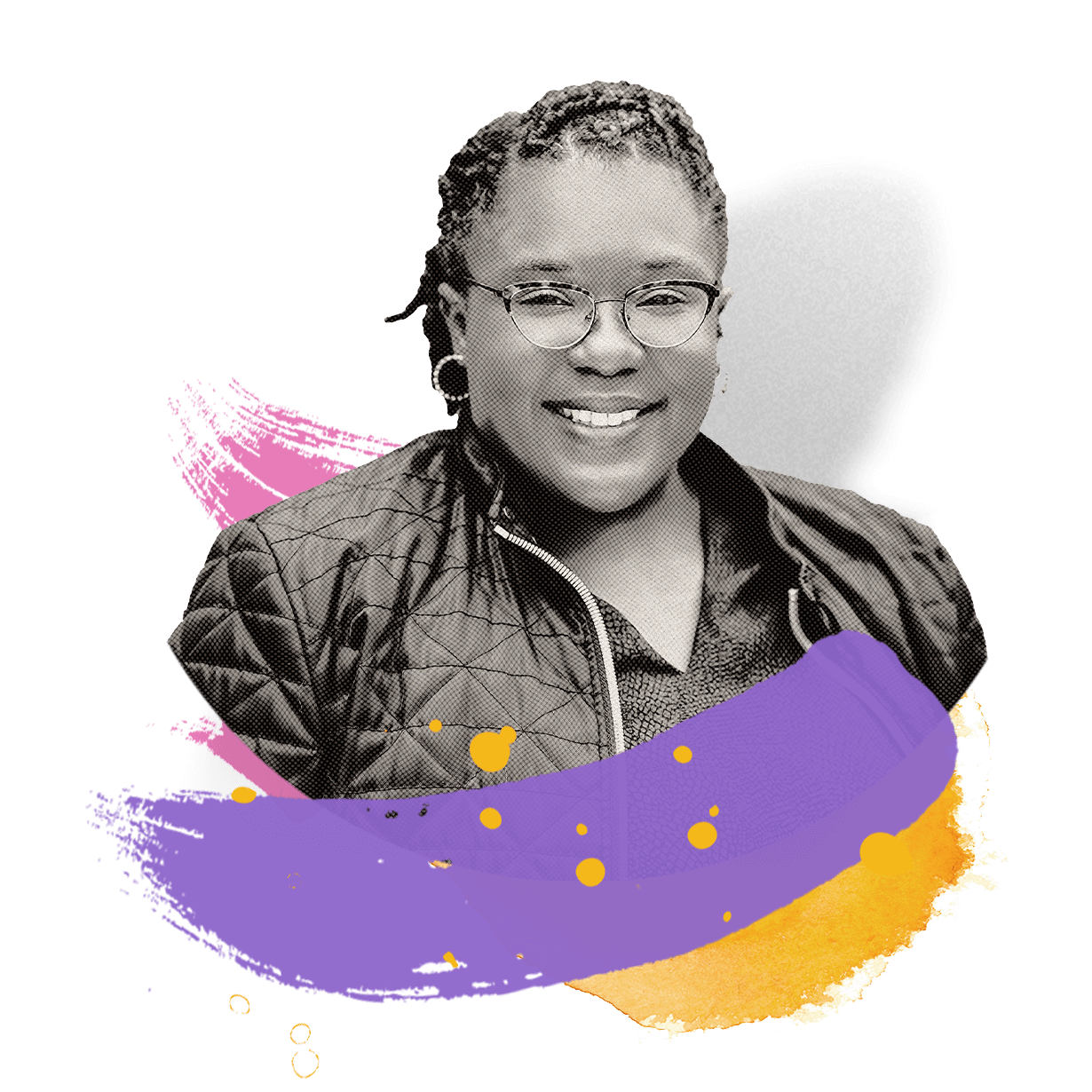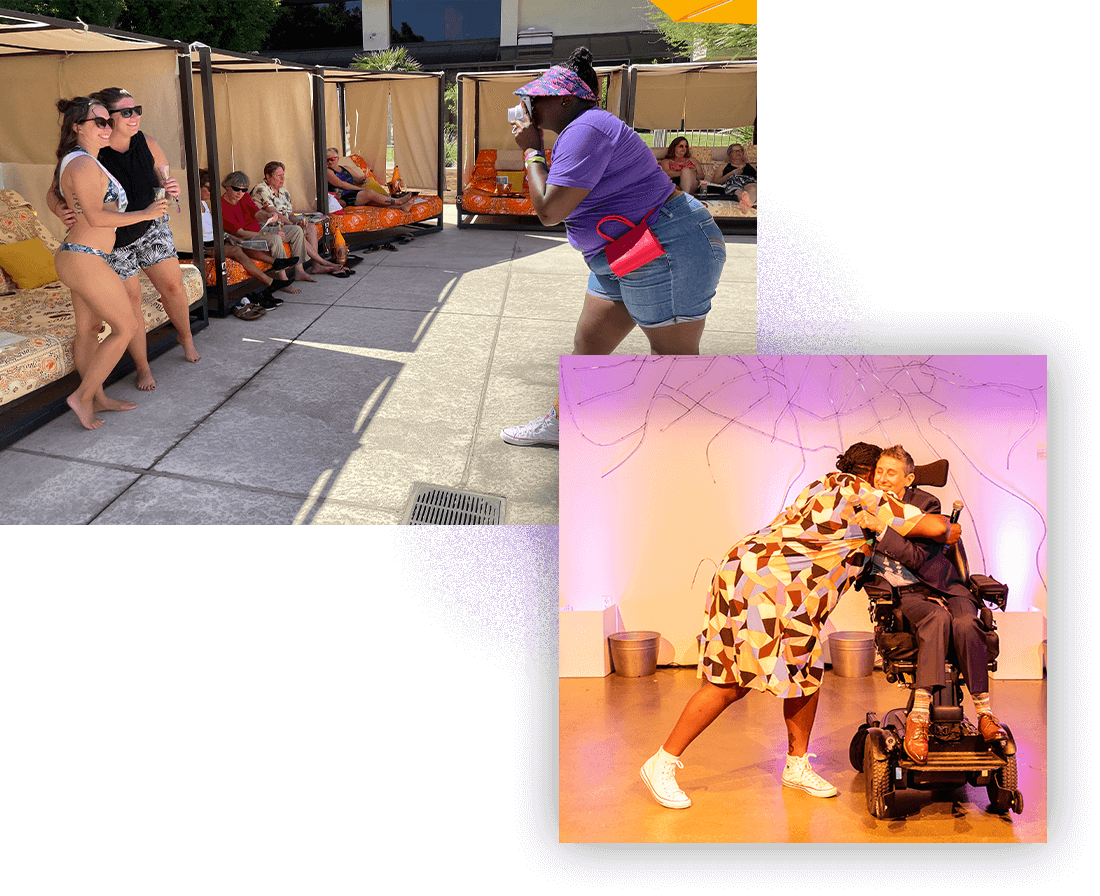From the desk of The Curve Foundation’s Executive Director, Jasmine Sudarkasa.
The legacy of Curve has always been to be seen, authentically, for all of the ordinary and extraordinary stories that a life can hold. It celebrates the distinct cultural impact of lesbians and creates a public square to hash out the more difficult edges of being a community.
In Curve, visibility is being seen and heard: journalists, musicians and athletes told their stories alongside the everyday Curve reader. These women and people were co-creating a record of a moment in time, and our work — now — is to reflect the longevity of that vision.
Curve: Now and then
The work of the Curve Foundation is embedded in its mission: we share culture and stories, connect with each other and raise the visibility of lesbians and queer people. We’ve built our programming around these three pillars: culture, connection and visibility – and each of our first three years has been dedicated to an individual pillar of focus.
In our first year, we focused on connection: traveling to queer events, making ourselves known to our peers in the work, and leaning on our archive to connect the dots (and intersections) between the many members of our community. It felt ambitious to try to align lesbians, non-binary people, bisexual women, and trans people around a common goal, but certainly worth a try. We celebrated heritage months and published new voices at curvemag.com, because (as a Black woman) it mattered to me that those who embody my queerness saw themselves here, too.
But questions came up, time and time again, about where People of Color might locate themselves in Curve’s history. Folks couldn’t connect with our work because they couldn’t see themselves in it — we learned that words were not enough. Visibility, and action, needed to be considered.
So, in our second year, we worked to share culture and stories. Difficult conversations needed to be had. We asked ourselves: ‘Where would the community go if we let ourselves talk, unencumbered by a need to explain our intersections or hide our scars?’ Perhaps we could do the work of connection by sharing culture and stories, visibly, for our community and those seeking to join it. Even within our intersections, we needed to be seen for ourselves.
We launched Beyond the Rainbow to celebrate Lesbian Visibility Week 2022. On Zoom, we started a conversation in a new public square, intended to go beyond the ‘rainbow Pride’ consciousness that tends to lump us all together: yes, we can organize ourselves around the labels of “woman” or “latinx,” but what are the rougher edges that we skim past to do so? We spent 2022 in a conversation that went to the marrow of culture, and story, and we learned that our folks have a tolerance (and deep desire) to talk about hard things.
At the start of our third year, I’m reflecting on the final piece of our mission, visibility, and what we’ve learned about being seen along the way.
When folks reduce Curve to its cover stars, they see a one-dimensional vision of white, thin, cis-presenting lesbianism. If we remove Curve from its context, we forget what the publication means in the history of lesbian self-identity and the visible, messy steps that progress often takes. Our history has taught us that connection requires visibility, but that without culture, nuance, and story we cannot really see each other.
This is why we’ve decided to launch Curve as a digital quarterly that recreates our public square for today’s context. Our hope is that it can be another place to explore visibility, culture and story, and we’ve asked Curve’s last editor-in-chief Merryn Johns to take the helm and guide us. It’s digital, slower than the news, and focused on the joyful ties and edges between us.
A co-created vision
When we center connection, share culture and stories, and allow ourselves to be visible in our humanity, we see a vision of a future that is as ordinary as it is extraordinary. Long before social media, Curve was a testament to how incredible visible ordinariness could be. To see ourselves, fully, and find our community, is the first step towards organizing ourselves around joy.
As a foundation, we’re dreaming and organizing around a future beyond visibility: one where we can embody our most human selves, both ordinary and exceptional, and one where we can always find each other.

